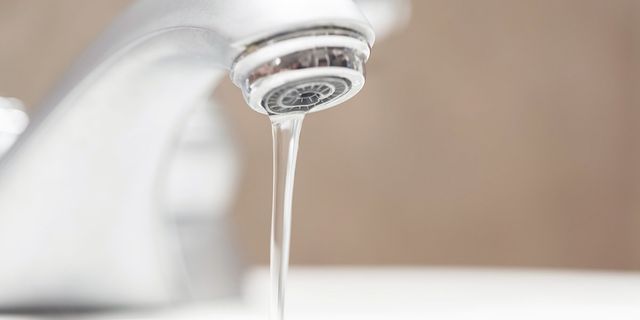Leading Methods for Addressing Low Water Pressure in Your Home
Leading Methods for Addressing Low Water Pressure in Your Home
Blog Article
Were you interested in details involving 4 Ways to Troubleshoot Low Water Pressure?

Low water stress in your house can be an irritating problem, impacting whatever from showering to washing dishes. If you're experiencing weak water circulation, there are a number of possible causes and solutions to explore. In this overview, we'll discuss common factors for low tide stress and useful steps to deal with the concern efficiently.
Intro to Low Tide Pressure
Low water pressure takes place when the circulation of water from your taps, showers, and various other components is weaker than normal. This can make daily tasks a lot more challenging and less effective. Understanding the sources of low tide stress is crucial to discovering the right remedy.
Common Root Causes Of Low Tide Stress
Pipeline Obstructions
With time, pipelines can end up being clogged with natural resource, sediment, or debris, limiting the flow of water. This is a common concern in older homes with galvanized steel pipes.
Rust
Rust within pipes can lead to leakages and decreased water pressure. Corrosion accumulation can tighten water flow, particularly in aging plumbing systems.
Faulty Pressure Regulatory Authorities
Stress regulators are accountable for keeping consistent water stress in your home. If they malfunction, it can cause low tide stress or uneven circulation throughout your home.
Municipal Water Issues
Sometimes, the trouble exists outside your home. Municipal water issues, such as main line leaks or maintenance job, can momentarily minimize water pressure in your area.
Exactly How to Identify Low Tide Stress
Inspecting Faucets and Fixtures
Beginning by evaluating the water pressure at different taps and components throughout your home. If the concern is isolated to specific areas, it may indicate local issues.
Checking Pipelines
Inspect noticeable pipelines for indications of leakages, corrosion, or clogs. Focus on any uncommon audios, such as banging or rattling pipelines, which could suggest problems within the plumbing system.
Consulting with a Plumber
If you're not able to identify the root cause of low tide pressure, take into consideration hiring an expert plumber to carry out a detailed inspection. They can identify underlying problems and recommend proper options.
DIY Solutions to Deal With Low Water Stress
Cleaning Up Aerators and Showerheads
Natural resources can accumulate in aerators and showerheads, minimizing water circulation. Eliminate and clean up these parts on a regular basis to improve water stress.
Flushing Hot Water Heater
Sediment accumulation in the water heater can limit circulation and minimize performance. Flushing the container occasionally aids remove sediment and maintain optimal efficiency.
Examining Pressure Regulatory Authority
Ensure that the stress regulator is functioning correctly. Adjusting or replacing the regulatory authority can help restore appropriate water pressure throughout your home.
Clearing Clogs in Piping
For small clogs, attempt using a plumbing snake or chemical drainpipe cleaner to clear obstructions in pipes. Beware when utilizing chemicals and follow safety and security guidelines.
When to Call an Expert Plumber
If do it yourself initiatives fall short to resolve the issue or if you presume substantial plumbing troubles, it's ideal to seek assistance from a certified plumber. They have the expertise and tools to attend to complex concerns securely and efficiently.
Safety Nets to Maintain Water Pressure
Regular Upkeep
Arrange regular maintenance for your plumbing system to prevent problems such as rust, leaks, and clogs. Dealing with minor issues early can help stay clear of more substantial repairs later.
Mounting a Stress Booster
Take into consideration mounting a pressure booster pump to boost water stress in areas with consistently reduced circulation. This can be specifically advantageous for multi-story homes or homes with high-demand components.
Surveillance Water Usage
Be mindful of water usage routines and stay clear of overtaxing the plumbing system. Basic changes, such as astonishing showers and washing loads, can help keep ample water pressure.
Verdict
Managing low tide pressure can be aggravating, but identifying the underlying causes and executing suitable remedies can recover optimal flow throughout your home. Whether it's cleansing aerators, checking pipes, or speaking with a plumber, taking positive steps can make sure a constant supply of water for your daily requirements.
FOUR WAYS TO FIX LOW WATER PRESSURE NOW
Turning on a shower or faucet only to find the water comes out in a sad, slow drizzle is never a good feeling. How exactly are you supposed to wash a pan or take a quick shower when it takes 10 minutes just to rinse off a little soap? The good news is that when your water pressure is bad, there's always a cause: typically one that can be easily fixed. Here are some of the most common causes of low pressure and what you can do to fix the issue:
DEBRIS AND MINERAL DEPOSIT BUILDUPS
If you notice low water pressure from just one or two of the fixtures in your house, the problem likely has to do with debris buildup. Water is full of minerals and other debris, all of which can accumulate in your pipes and on your fixtures. This can cause a blockage that affects how much water flows through. To fix this, try filling a small plastic bag with white vinegar, and use a rubber band to hang it around your showerhead or faucet. Let the head of the fixture soak for a few hours, and the vinegar should loosen the deposits.
WATER LEAKS
Leaks are another common cause of low water pressure. If water is flowing out of your plumbing through a hole or crack before it can reach your fixture, the pressure coming out of the faucet or showerhead will be lower. A plumbing professional is your best bet for finding and repairing a leak in your water supply pipes.
Leaks are another common cause of low water pressure. If water is flowing out of your plumbing through a hole or crack before it can reach your fixture, the pressure coming out of the faucet or showerhead will be lower. A plumbing professional is your best bet for finding and repairing a leak in your water supply pipes.
FOUR WAYS TO FIX LOW WATER PRESSURE NOW
Turning on a shower or faucet only to find the water comes out in a sad, slow drizzle is never a good feeling. How exactly are you supposed to wash a pan or take a quick shower when it takes 10 minutes just to rinse off a little soap? The good news is that when your water pressure is bad, there's always a cause: typically one that can be easily fixed. Here are some of the most common causes of low pressure and what you can do to fix the issue:
DEBRIS AND MINERAL DEPOSIT BUILDUPS
If you notice low water pressure from just one or two of the fixtures in your house, the problem likely has to do with debris buildup. Water is full of minerals and other debris, all of which can accumulate in your pipes and on your fixtures. This can cause a blockage that affects how much water flows through. To fix this, try filling a small plastic bag with white vinegar, and use a rubber band to hang it around your showerhead or faucet. Let the head of the fixture soak for a few hours, and the vinegar should loosen the deposits.
WATER LEAKS
Leaks are another common cause of low water pressure. If water is flowing out of your plumbing through a hole or crack before it can reach your fixture, the pressure coming out of the faucet or showerhead will be lower. A plumbing professional is your best bet for finding and repairing a leak in your water supply pipes.
Leaks are another common cause of low water pressure. If water is flowing out of your plumbing through a hole or crack before it can reach your fixture, the pressure coming out of the faucet or showerhead will be lower. A plumbing professional is your best bet for finding and repairing a leak in your water supply pipes.
A VALVE ISSUE
If you have low water pressure throughout your home, check your main shut-off valve to make sure it's completely open. You may also want to see if there's a pressure-reducing valve installed. If there is, have a plumber help you adjust the settings to get the pressure you're looking for.
OTHERS USING WATER
Believe it or not, your low water pressure could be caused by your neighbors. If you notice low pressure at certain times of day, it may be because you and the people living next to you have similar schedules - when everyone is showering at the same time, the pressure will be lower in every home. Low pressure throughout the neighborhood may also be caused by an issue with your municipal water supply. If that's the case, call the supplier to see if they're working on the issue.
https://www.rotorooter.com/blog/water-leaking/low-water-pressure-fixes/

I recently found that blog post about 9 Reasons for Low Water Pressure in Your House while doing a lookup on the web. Are you aware of anybody else who is enthusiastic about the niche? Take a moment to promote it. I treasure reading our article about 9 Reasons for Low Water Pressure in Your House.
Book An Estimate Now Report this page